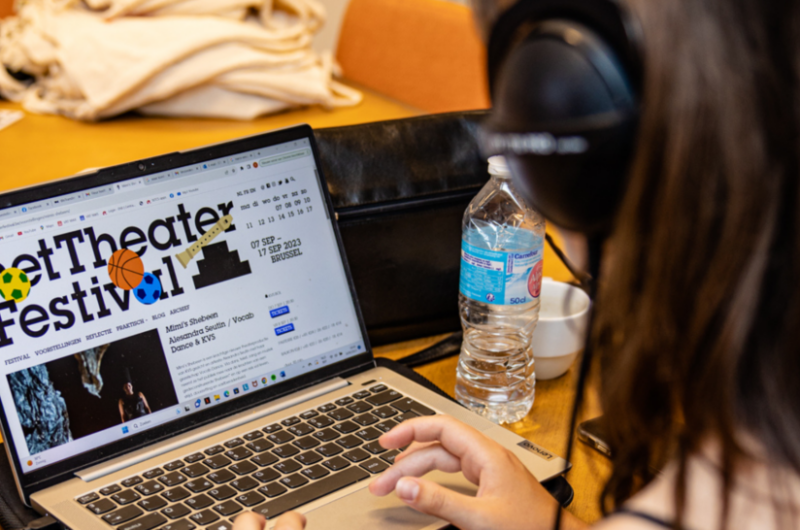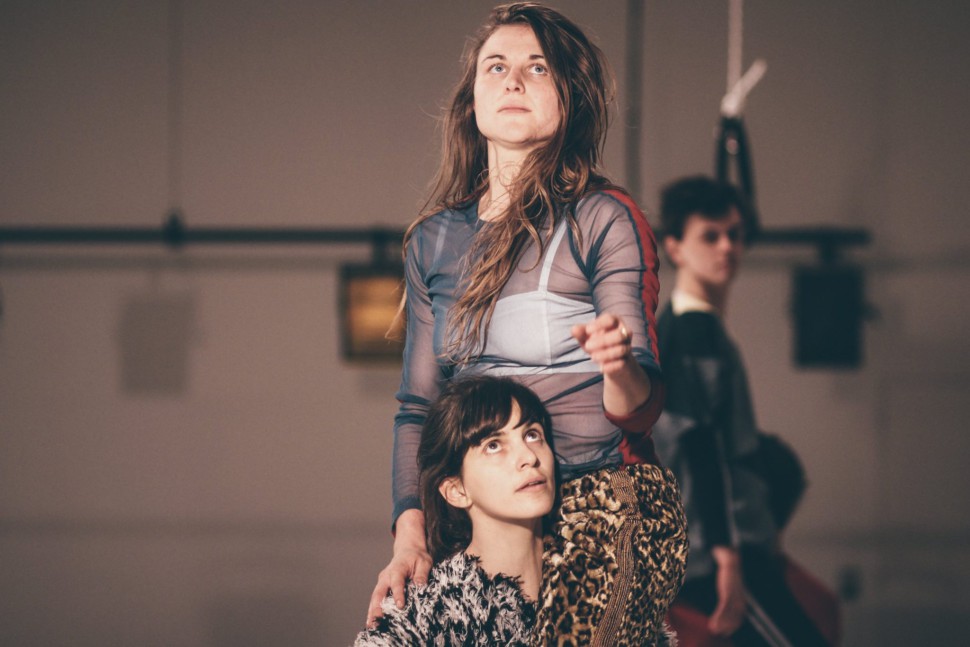
Stage: communicatie & sociale media
13 Maa 2024
za 09 sep 2017
The day before Mazing is shown at the TheaterFestival, I meet dancer and choreographer Vera Tussing in the rehearsal space at Kaaistudio’s. A calm and articulate presence, she welcomed me very warmly.
Nina Vurdelja

Vera Tussing is artist in residence (2017-2021) at Kaaitheater. After living in Germany and London, she also lived in Brussels for a while. But at the moment she finds herself more being here than ever before. Immersed in the space, I confidently skip the small talk and go immediately to the point.
So, what are you working on at the moment? What is Mazing about?
For three or four years I have been working around ideas of touch and tactility. If I look at it retrospectively, I see this piece as the third chapter of the work that I am developing: there was T- dance in 2014, The Palm of Your Hand in 2015, and Mazing that premiered in 2016. Tacticity is the concept that runs through each piece here, but each has a specific relationship to the audience.
For Mazing, we create a situation, which allows the choreographic material of the piece to develop in through a series of encounters with the audience.
One of the core concepts in Mazing is the idea of passive and active audience. We, as performers, call people into action, creating a series of physical networks.
Throughout the process, we aim not to simply “execute” tasks, but to experience the moment of creation in contact with an active audience. That said, any form of participation has to be negotiated. We don’t try to force a consensus and people finding their own way into the piece is a complement.
I am interested to see how dance and movement can be built in a particular moment and in relation to a particular audience, and how, in the course of the show, it can transform into something else.
It might be interesting to think about transformation in terms of shift from physical to digital reality, and how it shapes the notions of presence, community, togetherness.
There is always so much of the digital around us. In this traveling artist community, like everyone else, we communicate so much via technology and social networks. All that is very much a part of our lives.
But, there is an element of dance and physicality that allows us to be in this moment, and to be able to communicate with our surroundings in a different way. It is a challenge for all of us to be really present. I enjoy theatre as a potential for non-digital space.
In Mazing you are calling people to be active and present on the stage, but also giving them a freedom to be in another space in the same time. How do you see theatre space in relation to what is our daily reality, our everyday routines and habits?
Being occupied with some concepts in the studio affects how you encounter them outside, you notice what is around you in a different way. It is a process of sensibilisation to reality. I usually begin a new work longing to understand our reality. But again, for me it is hard to tell, I have danced since I was nine and I feel completely immersed by dance.
You seem to have very particular aesthetics, but what catches attention is more what is beyond that, in-between and around the images and choreography we see on stage. What is that exactly about?
I avoid treating dance as a product. We transform, our bodies transform – we are not simply hanging on the wall to be looked at. We build a sort of community with the audience. Through small acts of staging, the idea of agency over the theatre apparatus is shared – though we stay performers, and the audience stays an audience.
That makes me think about a certain tendency that we witness lately in the contemporary dance scene, an obvious decrease of the human performer, of the bodily. How do you position towards this poetics?
In the current climate, is it very tempting to reduce performers, because of decrease of funding (laughing).
For me personally, the body is the starting point – it is the centre of our curiosity and the possibilities of the sensory apparatus. It has been my focus and I don’t think it will ever go.
Whenever I am looking into technique, or the technical possibilities of the theatre – I am actually asking how it triggers the body. As long as I am hanging around perceiving with a body, I will relate to the work in a physical way. It always comes back to the body.
